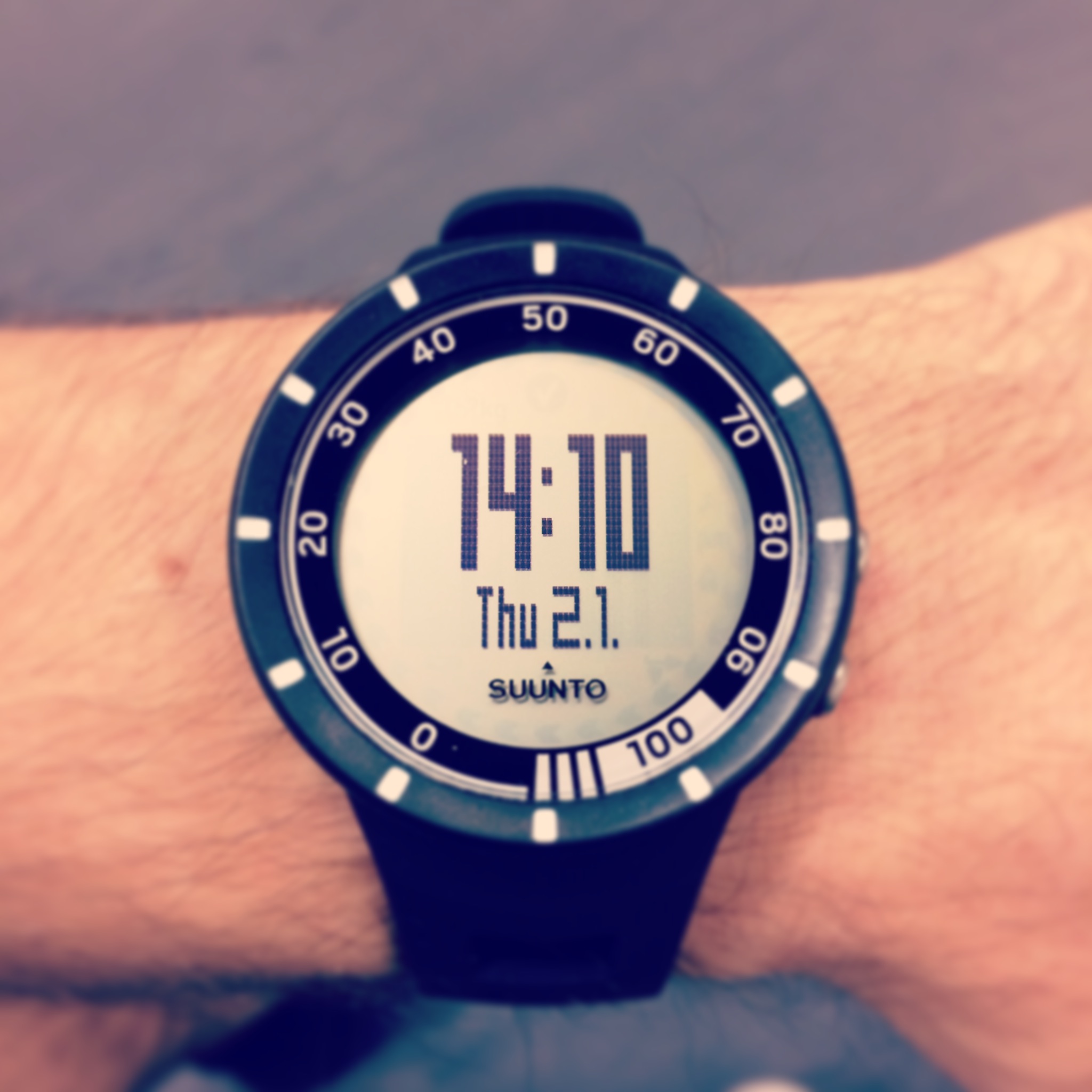Finally found a heart rate watch that isn't HUGE or oddly shaped! I'd been relying on my trusty Smith & Wesson army watch (second hand, slim, made by Smith & Wesson...what isn't there to like) til the band broke and I took the plunge with a Suunto Quest. I'd really only ever considered Suunto because of the simple shapes and minimal visible bells and whistles, but the size felt like having a hockey puck strapped to your wrist. Quest is the smallest, slimmest model but still much larger than what I was used to.
Why use a heart rate monitor? If you do any sort of steady state endurance (running, cycling, rowing, skiing, etc), it's beneficial to monitor the body's response to a prolonged stimulus, keep yourself in the appropriate HR zones and with Suunto's connection with Movescount, you keep track of heart rate levels, among other stats.
I usually opt for shorter bursts of intensity over longer endurance cardio, and the Movescount system is just as effective for that. It shows (close approximations) of VO2 max, EPOC levels, energy consumption, R-R (heart rate intervals) and, obviously for a heart rate monitor, your HR chart.
Charts from a HIIT session that included TGU's, deadlifts and sprints
As you can see it covers lots of information for a watch and chest band. Will you use all of it? Most likely not, but the more you know about what each function does and stands for, the more you can get out of your training and measure your progress.
And worst case scenario, its a damn fine looking watch that won't break down from the beatings it takes in the gym.
For more info on Suunto watches and their functions, check out the site at www.suunto.com and its affiliate, www.movescount.com.



